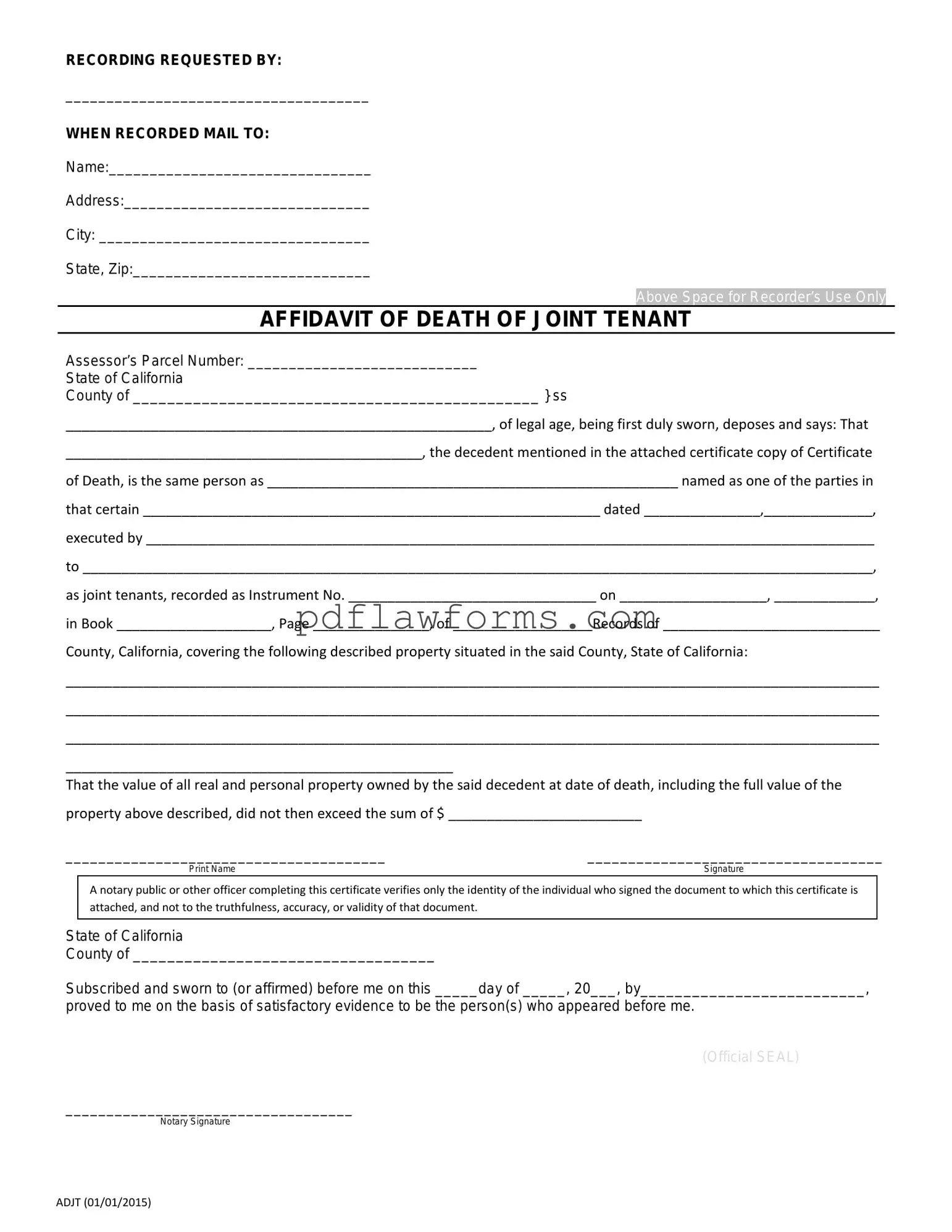When filling out the California Death of a Joint Tenant Affidavit form, many individuals make common mistakes that can lead to delays or complications in the transfer of property. One frequent error is failing to include the correct names of all joint tenants. It is crucial to accurately list the names as they appear on the original deed. Omitting or misspelling a name can cause legal issues later on.
Another mistake involves neglecting to provide the date of death of the deceased joint tenant. This date is essential for establishing the timeline of ownership transfer. Without it, the affidavit may be deemed incomplete or invalid. In addition, some people overlook the requirement to attach a certified copy of the death certificate. This document serves as proof and must be included to validate the affidavit.
Individuals sometimes fail to check the box indicating whether the property is community property or separate property. This distinction can affect how the property is handled after the death of a joint tenant. Additionally, many forget to sign the affidavit in the appropriate section. A missing signature can render the document ineffective, requiring further action to rectify the situation.
Providing incorrect information about the property can also be a significant error. The address and legal description of the property must be accurate. If the details do not match the records, it may lead to disputes or delays in processing the affidavit. Furthermore, some individuals neglect to have the affidavit notarized, which is often a necessary step for the document to be considered valid.
Another common oversight is failing to indicate the relationship between the surviving joint tenant and the deceased. This information can be important for legal clarity. Additionally, people sometimes submit the affidavit without reviewing it thoroughly for any inconsistencies or errors. Taking a moment to double-check can save time and prevent complications down the line.
Finally, individuals may not be aware of the specific filing requirements for their county. Each county may have different procedures or additional documents needed. Not being informed can lead to unnecessary delays in the processing of the affidavit. By being mindful of these common mistakes, individuals can ensure a smoother experience when completing the California Death of a Joint Tenant Affidavit form.
